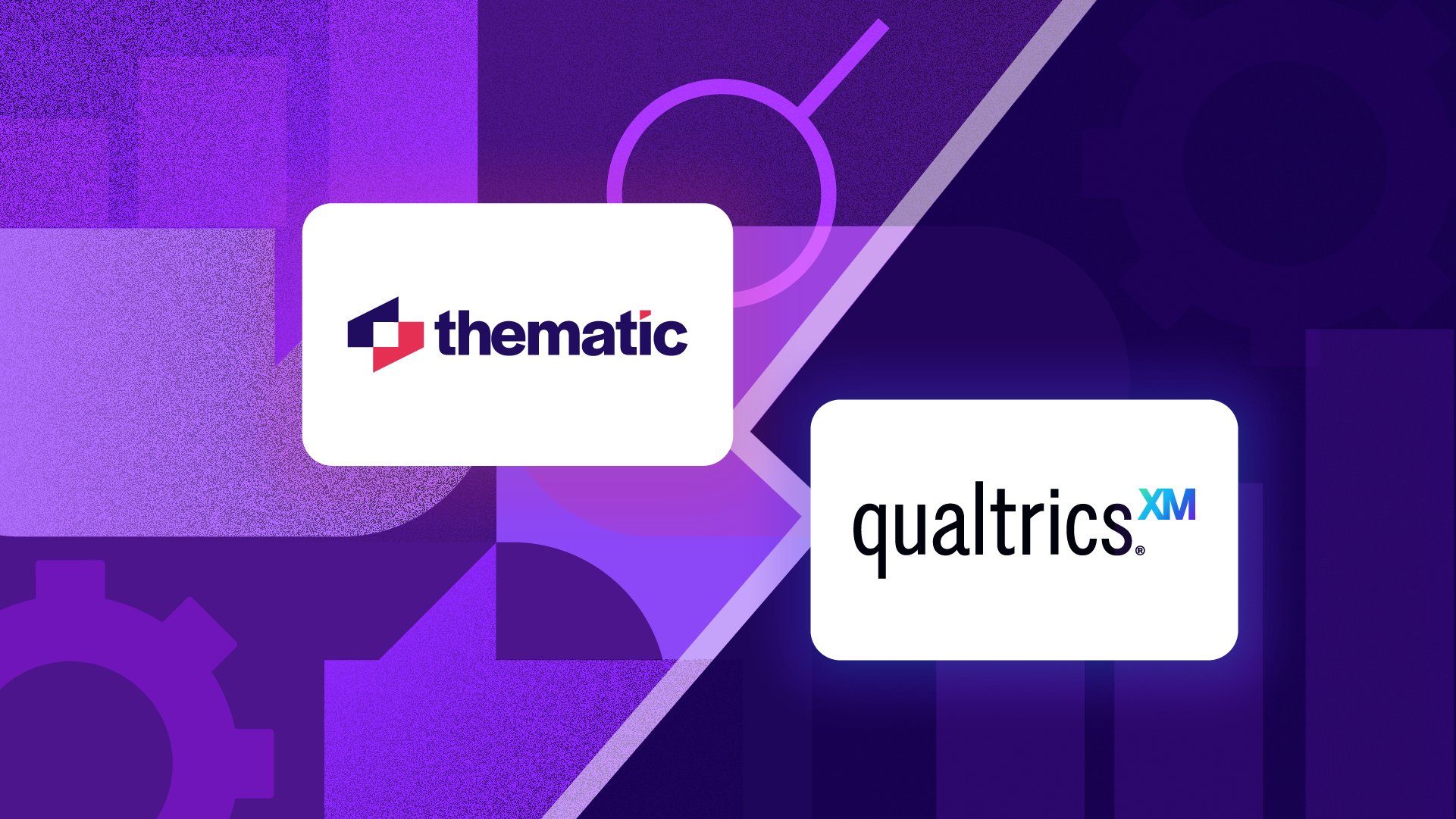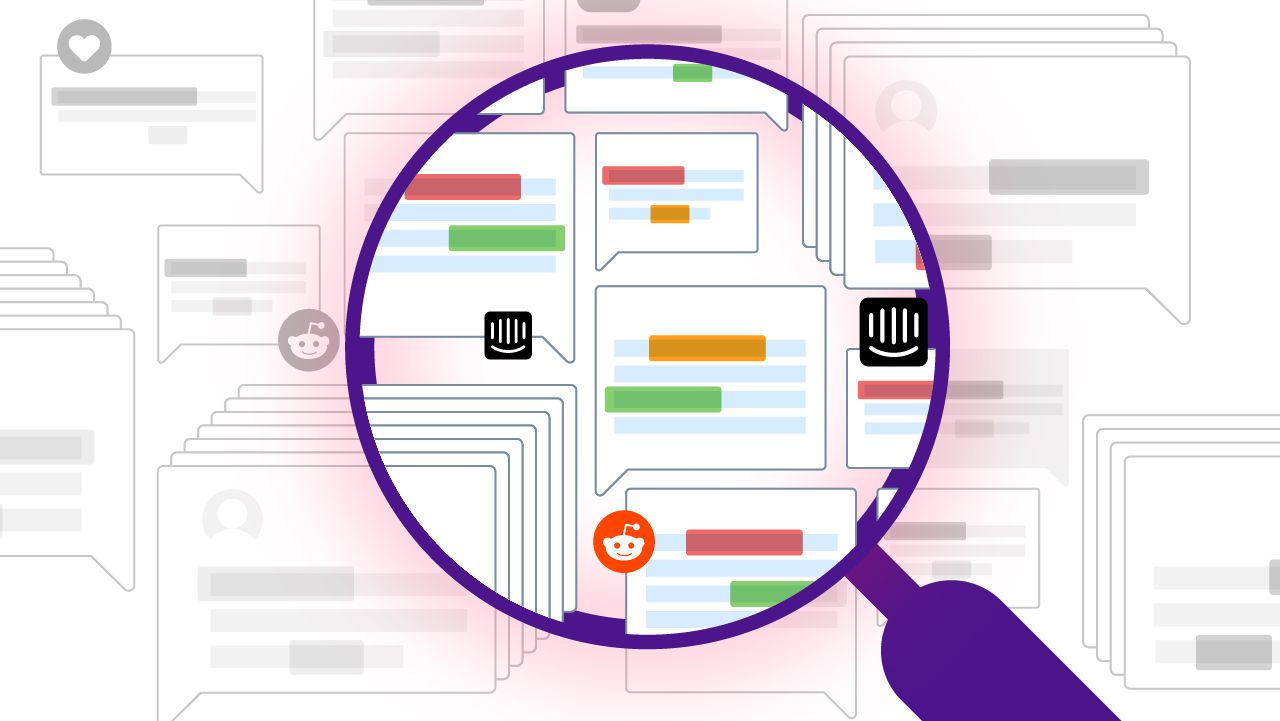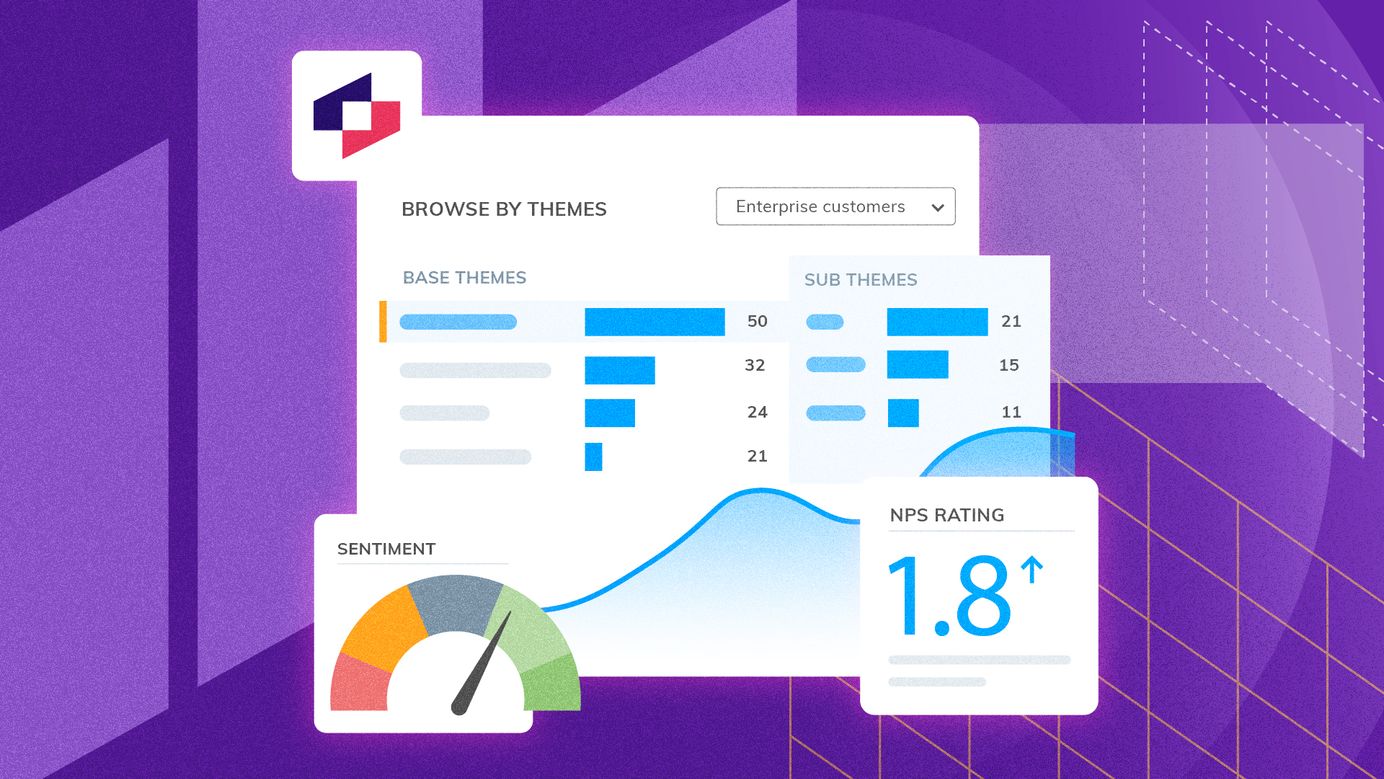
AI helps unlock valuable insights, but is there a catch? Learn from insights thought leaders
How are insights leaders using AI to help them be more successful? Several thought leaders shared their perceptions with us at TMRE 2023 - here are 5 key considerations.
How are insights leaders using artificial intelligence (AI) to get valuable insights from data? What can we learn from those who are experienced with using AI?
Alyona and Alana recently returned from the TMRE 2022 conference in Texas, where a number of thought leaders discussed the topic of using AI in insights.
So we can all learn and benefit from their experiences, we've summarized their main thoughts and ideas.
1. AI removes friction from analysis, speeding up time to insights
Thought leaders were in agreement: AI's role is to build efficiencies in research processes. The immediate benefit is that analysts and insights teams get insights faster. With quicker access to rich insights, they can have a greater impact on business decisions.
The volumes of unstructured data companies are collecting mean AI is necessary - companies can't afford to wait for all the data to be manually analyzed .
"AI …builds efficiencies out in current research processes that take a lot of person hours."
"AI …can help evaluate at a quick level either quality control issues or thematic issues …to evaluate what the next step is going to be."
2. AI should be available as a tool to use, not a full end-to-end solution
To unlock all the insights that help your company grow the business, it's not the end solution to rely on AI. Every thought leader agreed that there's still a strong need for manual effort and human input.
What people need is a tool to be built around the AI, so they can work with the results to unleash their creativity and insights development. To that end, the AI needs to be part of a tool that is easy to use.
One example was for AI to be a tool that gets you more efficiently to a stage where you can evaluate next steps. Another was for AI to provide the answers to any questions you have. It's up to you to decide how to act on those answers, given the business context.
"I think it's a tool that smart researchers can use, but it's not the end solution to rely on AI."
3. Lack of familiarity with models can be a barrier to trusting the results
It appears that many insights professionals don’t really know what AI is and what it can do. How can it solve everything from Watson to picking out the right loan contract? Insights professionals who aren't familiar with modeling data don't really understand what the AI is doing.
“They just give you a model and you're like, yeah, what is this model?”
But don't let a lack of familiarity with data models get in the way of using AI. Instead, learn how to validate, refine and build trust in the results.
“So I think we need more tools for people to triangulate AI findings with their other data. It helps people understand how to use it and make it add more value.”
One thought leader recommended triangulating AI results with other data for validation. The key thing here is to establish trust in the process and the outputs. This way you'll be able to make the most of your AI tool.
4. There needs to be a way to augment the AI, so people can build in their own knowledge
AI results are considered good when they reinforce gut instinct and other relevant data. Yet, it’s critical the AI reflects reality without you having to code that in. The sweet spot is for the AI to make sense of the data on it's own while allowing for insights teams to build in their own knowledge.
"There needs to be a way to build in what you know from your own research."
This reinforces the ideal of AI as a tool. Here the concern is overcoming the issue where the AI uses a basic model or delivers obvious output. Insight leaders should be able to augment the results with their own knowledge.
"People need to be able to manipulate and massage the data behind the AI results and just dig deeper into some themes or subcategories. This is key, particularly when the initial topic that comes back is a very obvious thing."
5. Fear of AI is driven by job insecurity, but understanding it adds employment value
There’s no reason to be afraid of AI. It still requires a lot of manual work and human intervention.
In fact, there are a lot of exciting opportunities for people as a result of AI. It adds more opportunities in the tech industry. Analysts, data scientists and other insights professionals will move into jobs where they add the next layer of value.
In a nutshell
We heard that most big companies are using AI to make it easier to find insights in the sheer volume of feedback data. By quickly and accurately analyzing customer feedback, their insights leaders are better able to work as strategic partners. No more being stuck in the corner, processing numbers in data silos.
Thought leaders had a few words of caution though. Many insights people are unfamiliar with how AI works and don't know how to leverage it effectively. The best approach is to work with AI as an interactive tool - not as a solution that does everything for you. It’s important to stay close to the data and to your customers, so you can augment the AI results with your own knowledge. Use technology that will support you, not replace you.
If you'd like to find out more, please reach out to me. I'm on a mission to help people get customer insights to everyone that needs them.
_______________________________________________________
We spoke with several insights thought leaders, including Manila Austin, VP Research at C Space, Nicole Moreo, Head of Customer Insights at LinkedIn, Joe Jordan, Senior Vice President of CX + Innovation at Ovation MR, and Jim Newswanger, Sr Market Intelligence Research Manager at IBM.
Stay up to date with the latest
Join the newsletter to receive the latest updates in your inbox.




